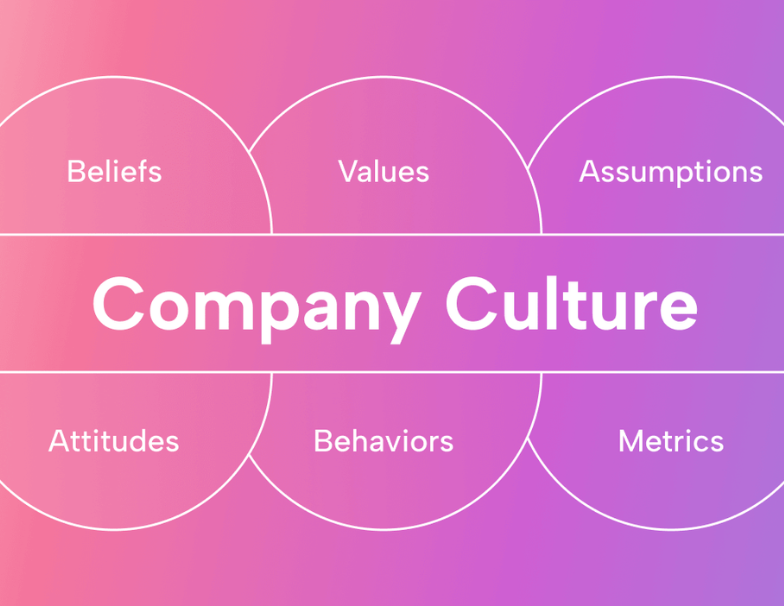What is Diversity: Understanding Its Importance and Impact

Diversity refers to the variety of characteristics that make individuals unique. This includes aspects like gender, race, ethnicity, age, sexual orientation, physical abilities, and more. Understanding what diversity helps in recognizing the importance of different perspectives and experiences in creating inclusive and innovative environments. This article explores the definition, types, benefits, and challenges of diversity, along with strategies to promote it in the workplace.
Key Takeaways
- Diversity encompasses a broad range of characteristics, such as gender, race, and socioeconomic status, and is essential for fostering innovation and inclusivity in the workplace.
- A diverse workforce enhances business performance, leading to higher cash flow, improved decision-making, and increased access to new markets.
- Promoting diversity involves overcoming challenges like unconscious bias and representation in leadership, and implementing strategies such as Employee Resource Groups, inclusive hiring practices, and ongoing diversity training.
Defining Diversity

Diversity is more than just a buzzword; it encompasses a wide range of individual characteristics that make each of us unique. These characteristics include:
- Gender
- Race
- Ethnicity
- Religious
- Age
- Sexual orientation
- Physical abilities
- Ideologies
- Life experiences
- Socioeconomic status
- Demographic diversity
- Genders
The concept of diversity emphasizes the importance of recognizing and valuing these cultural diversity ideas to create a more inclusive and innovative environment.
One critical aspect of understanding diversity is the concept of intersectionality, which illustrates how combinations of social identities can influence experiences of oppression or privilege. For instance, a woman of color may face different challenges compared to a white woman or a man of color due to the intersection of gender and race. Recognizing these overlapping identities helps in creating more effective diversity initiatives.
Respecting and celebrating individual differences is crucial for harnessing the benefits of diversity. A work environment where every employee feels valued and included enhances problem-solving and innovation. Fostering a culture of respect and inclusion enriches the employee experience and contributes to overall business success.
Types of Diversity in the Workplace
Diversity in the workplace is multifaceted, spanning four main categories:
- Internal
- External
- World
- Organizational
Recognizing these categories allows organizations to address various dimensions of diversity within their teams effectively.
Internal diversity includes inherent traits such as:
- Age
- Gender
- Race
- Neurodiversity
These characteristics are intrinsic to an individual’s gender identity and play a significant role in shaping their experiences and unique perspectives. Acknowledging these differences enables organizations to create more inclusive policies and practices.
External diversity encompasses factors like citizenship, nationality, class bracket, family structure, and other factors. These elements are often influenced by an individual’s environment and life experiences. Understanding external diversity helps organizations address the unique needs and challenges faced by employees from different backgrounds.
Additionally, organizational diversity measures the representation of diverse staff across all departments, while worldview diversity contributes to cognitive diversity by incorporating various perspectives shaped by upbringing and life experiences.
Benefits of a Diverse Workforce

A diverse workforce brings numerous benefits to an organization, starting with enhanced innovation in workplace outcomes through broader perspectives. Companies that prioritize inclusivity focus on being 1.7 times more likely to innovate, tapping into the creative potential of their diverse teams and accessing a larger talent pool of resources, leveling the playing field and creating a wider range of opportunities.
Statistics show that inclusive companies report 2.3 times more cash flow per employee and are 35% more likely to succeed and surpass their competitors. This financial advantage is partly due to the improved decision-making processes in diverse teams, which are 87% more effective in making decisions. The mix of generational perspectives and cultural experiences enriches team collaboration and problem-solving capabilities.
Diversity, equity, and inclusion (DEI) initiatives contribute significantly to a positive workplace culture by:
- Integrating various perspectives
- Making employees feel more engaged and motivated when they see their unique identities and contributions valued, enhancing employee engagement
- Linking diverse management teams to 19% higher revenue, showcasing the tangible benefits of diverse leadership
In addition to financial and innovation benefits, diversity opens doors to new markets. Diverse businesses are 70% more likely to capture new markets, expanding their reach and customer base. This broader market access, combined with improved employee morale and creativity, makes a compelling case for promoting diversity in every organization.
Challenges in Promoting Diversity
Despite the clear benefits, promoting diversity in the workplace comes with its own set of challenges. One significant hurdle is unconscious biases, which can affect how individuals are perceived and treated. These biases, whether positive or negative, often stem from stereotypes and can influence hiring, promotions, and daily interactions, including implicit bias.
Another challenge is the lack of representation at leadership levels. When leadership teams do not reflect the diversity of the broader workforce, it can hinder the effectiveness of diversity initiatives and perpetuate existing biases. Additionally, cultural differences and stereotypes can lead to misunderstandings and conflicts within teams.
Discrimination and prejudice further complicate efforts to create an inclusive work environment. Employees from underrepresented groups may face a hostile environment, impacting their job satisfaction and performance. Addressing these challenges requires a concerted effort to recognize and mitigate biases, promote cultural understanding, and ensure representation at all levels of the organization.
Strategies to Promote Diversity in the Workplace

Organizations can promote diversity through several strategies, such as establishing Employee Resource Groups (ERGs). These groups:
- Are voluntary and employee-led
- Provide networking, support, and advocacy for diverse employees
- Offer valuable insights into workforce needs
- Inform diversity policies
Inclusive hiring practices attract a diverse group of applicants. Companies can enhance recruitment by offering benefits and work flexibility while ensuring their practices are free from biases. Leadership sets the tone for an inclusive culture by actively listening to employees and encouraging open dialogue.
Mentorship programs and diversity training further support diversity initiatives. Mentorship pairs employees from different backgrounds, fostering learning and connection. DEI training programs educate employees about diversity, mitigates biases, and emphasizes the value of inclusivity, enhancing innovation.
The Role of Equity and Inclusion

Equity and inclusion are integral to creating a truly diverse workplace. Equity ensures all employees receive fair treatment and access to opportunities, meeting their specific needs to enable full participation and success in the workplace.
Inclusion goes beyond mere representation; it involves creating environments where all individuals feel they belong and are respected for their individuality. An inclusive workplace culture fosters higher job satisfaction, improved morale, and increased productivity. Enhanced trust and rapport among employees make it easier to sustain diversity efforts.
The interconnectedness of diversity, equity, and inclusion (DEI) means that efforts in one area support and strengthen the others. An inclusive environment ensures that a diverse workforce thrives and contributes to overall success.
Implementing Diversity Policies
Effective diversity policies start with:
- Assessing current workforce diversity to identify areas needing improvement.
- Conducting a company-wide evaluation to provide a clear understanding of the diversity landscape.
- Using this information to inform the development of targeted initiatives.
A comprehensive diversity policy should cover:
- Recruitment
- Promotions
- Performance evaluations
- Hiring and implement diversity policies
This ensures diversity initiatives are integrated into all organizational areas. Additionally, setting up cultures and sensitivity training fosters an inclusive workplace by educating employees about the importance of diversity.
Committees and taskforces drive diversity efforts by overseeing initiatives, tracking progress, and ensuring accountability. Integrating diversity policies into core operations creates a more inclusive and equitable workplace.
Measuring Success in Diversity Initiatives

Measuring the success of diversity initiatives is crucial for continuous improvement. Diversity metrics quantify workforce representation, enabling organizations to assess how well they attract and retain diverse talent. Benchmarking and comparative analysis allow organizations to evaluate their DEI metrics against industry standards and peers.
DEI software enhances measurement efforts by centralizing data collection and providing real-time analytics. Transparent communication about DEI initiatives and goals fosters trust and accountability among employees, ensuring that diversity efforts are taken seriously. Setting specific DEI goals and tracking progress through key performance indicators fosters accountability in diversity initiatives.
Continuous improvement relies on regular analysis of DEI metrics to identify trends and set realistic goals. By regularly assessing diversity efforts using both quantitative and qualitative data, organizations can track career progression and identify areas needing improvement in their practice.
Summary
Diversity goes beyond surface-level differences—it encompasses gender, race, age, sexual orientation, socioeconomic status, and life experiences that shape individual perspectives. In the workplace, diversity fuels innovation, improves decision-making, enhances financial performance, and opens access to new markets. However, challenges such as unconscious bias, lack of leadership representation, and discrimination must be addressed through intentional strategies like inclusive hiring, Employee Resource Groups, mentorship programs, and DEI training. By embedding equity and inclusion into company policies and culture, organizations can create environments where employees feel valued, respected, and empowered to contribute fully. Ultimately, diversity is not just a moral responsibility but a driver of organizational success, creativity, and growth.
FAQs
- What is diversity in the workplace?
Diversity in the workplace refers to the inclusion of individuals with different backgrounds, identities, and perspectives. This includes factors such as race, gender, age, socioeconomic status, religion, sexual orientation, abilities, and life experiences.
- Why is diversity important for organizations?
Diversity enhances innovation, strengthens decision-making, and improves financial performance. Inclusive companies are proven to generate higher revenue, access new markets, and foster better employee engagement.
- What challenges do companies face in promoting diversity?
Common challenges include unconscious bias, limited representation in leadership, cultural misunderstandings, and discrimination. These barriers can hinder inclusivity if not actively addressed.
- How can organizations promote diversity effectively?
Strategies include creating Employee Resource Groups, practicing inclusive hiring, offering flexible benefits, launching mentorship programs, and conducting ongoing DEI training. Leadership must also model inclusivity and prioritize open dialogue.
You may also like
Unique spaces for your next offsite
Find distinctive venues for your upcoming corporate retreat.
Stay Updated with Our Insights
Get exclusive content and valuable updates directly to you.







